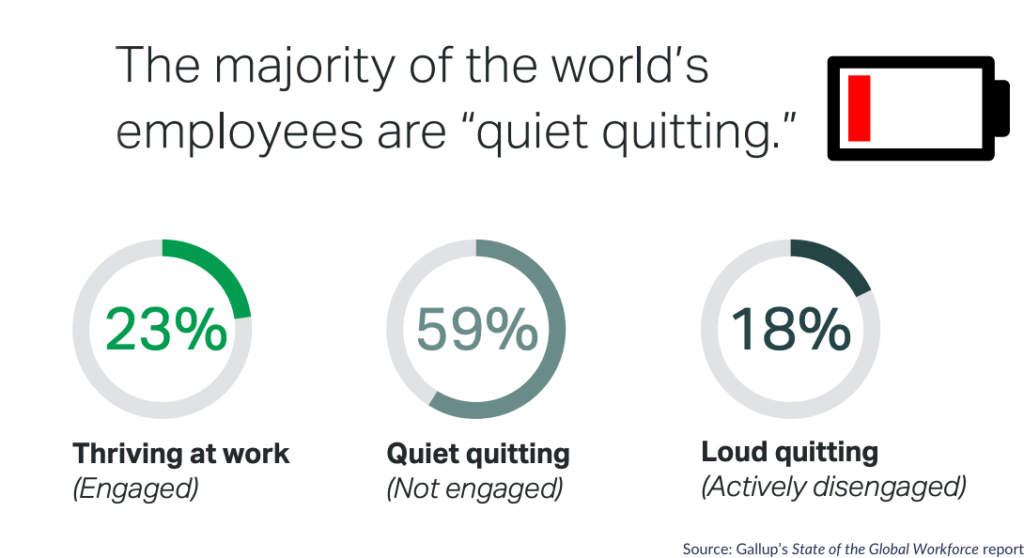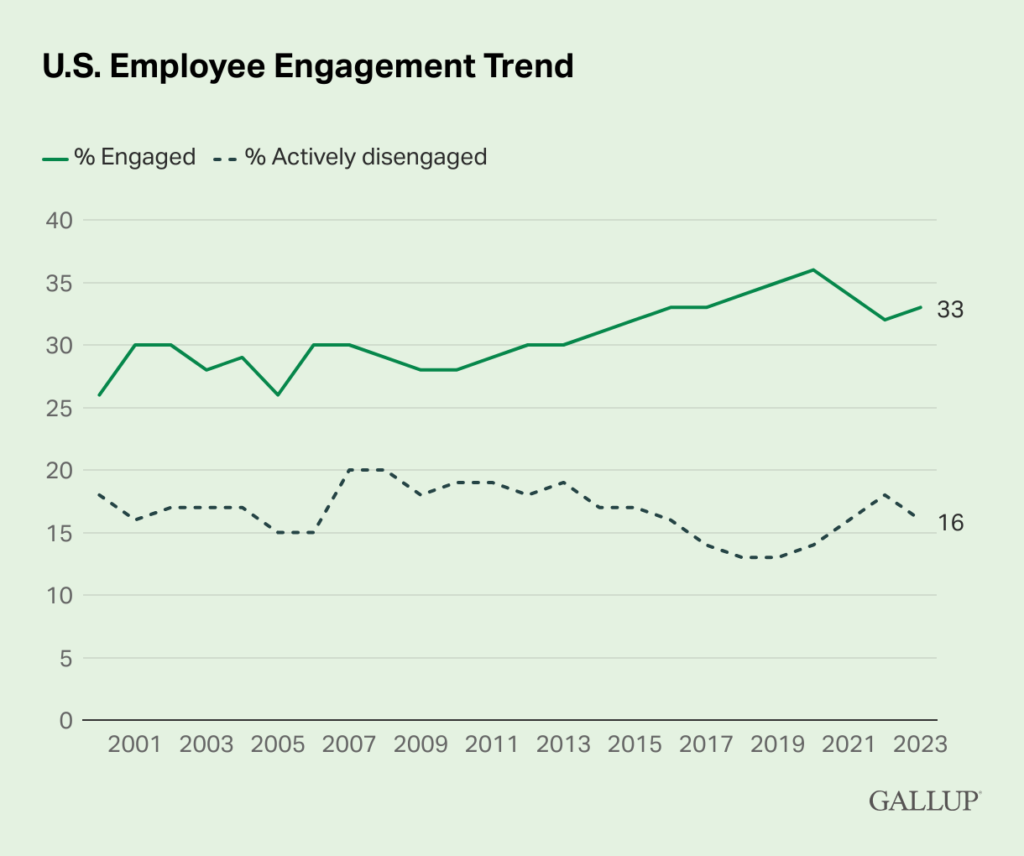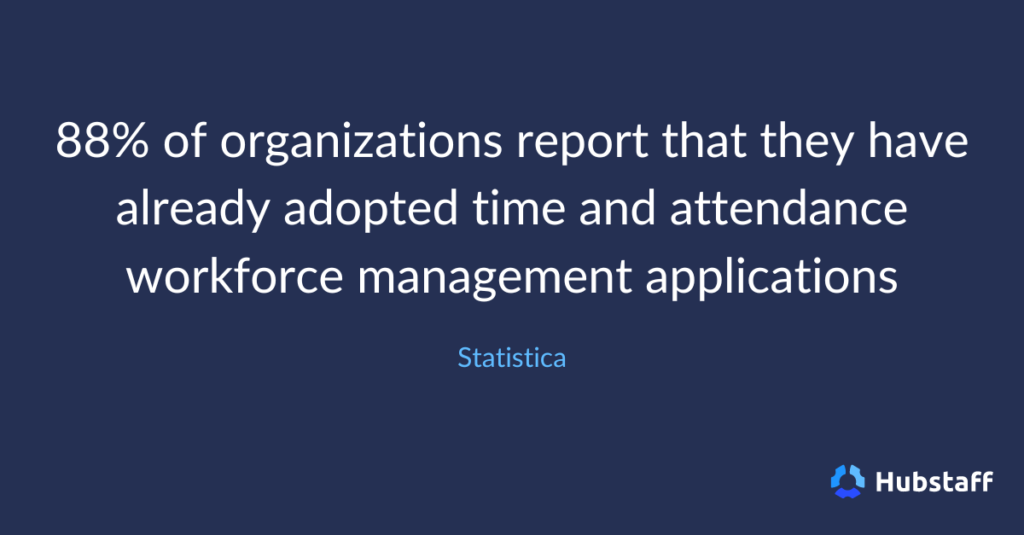Once again, a subtle phenomenon has emerged in the workforce. This trend, called “Quiet Quitting,” is stealthily reshaping an already confusing labor market.
Far from the dramatic exits or fiery resignations that leave co-workers gossiping for weeks at the water cooler, this term, called Quiet Quitting, operates in undertones. This new wave of exits leaves managers scratching their heads and employees wondering, “What happened to Frank in Marketing?” So what exactly is Quiet Quitting, and why does it matter?
Employees following the Quiet Quitting trend may be subtly evading the spotlight, but they’re leaving a profound impact on businesses. Join us on an exploratory journey as we delve into this covert new practice. We’ll discuss the definition of this phenomenon, why it’s happening, and how to prevent Quiet Quitting on your team.
Boost your team’s efficiency with Hubstaff's productivity tools
Quiet Quitting definition
Quiet Quitting, also known as silent resignation or stealth departure, is when an employee leaves a job emotionally before physically leaving or informing their employer. When Quiet Quitting, a team member will do the bare minimum to keep their job but stop going above and beyond.
Quiet Quitting examples include:
- Gradually disengaging from their responsibilities
- Subtly reducing their workload
- Limiting work to only what’s outlined in job descriptions
- Taking more sick days than normal
An employee doesn’t just entirely quit working one day. It’s much more subtle than that. Many managers might not even notice the change.
Much like the re-emergence of low-rise jeans, silent quitting started with Generation Z. In the 2023 State of the Global Workplace, Gallup found that Gen Z and Millennial engagement with work declined four points from 2019 to 2022.
While Gen Z might have started the Quiet Quitting trend, younger workers are not the only ones hopping on board. Many workers are pushing back against the hustle culture mentality, and studies show an alarming number of them are actively disengaged at work.

This issue might be more significant than previously thought. Gallup estimates that just 23% of people are engaged at work, while 18% are completely disengaged.
This is likely a consequence of the tumultuous labor market we have seen since the Pandemic, with shifting power dynamics between employees and employers. Unlike the Great Resignation, Quiet Quitters continue to work; they just don’t go the extra mile.
And, it turns out, this isn’t a one-way street.
What is Quiet Firing?
Two can play this game, and employees aren’t the only ones capable of subtlety.
While Quiet Quitting refers to employees silently pulling away from work, Quiet Firing is when an employer subtly reduces duties and slowly phases out an employee without overtly stating or acknowledging it.
Quiet Firing is the opposite of Quiet Quitting.
Unlike traditional termination, which involves explicit communication and formal procedures, Quiet Firing occurs more subtly. Often these methods aim to push the employee to quit, rather than going through the steps to fire them.
Quiet Firing can be motivated by various factors, like:
- Dissatisfaction with the employee’s performance
- Personality clashes
- Organizational restructuring
- A desire to avoid potential legal disputes or negative publicity
The impact of Quiet Firing
Quiet Firing can have substantial consequences for both the employee and the organization. So, what’s at stake? Your profits, it turns out.
Unhappy employees are less likely to be productive, directly impacting the company’s bottom line. Employees on the wrong end of Quiet Firing will likely feel confused, frustrated, and demoralized. Plus, the organization risks damaging its reputation and employee morale by demonstrating these poor management skills.
Over half of workers are already suffering from stress at work, so adding an extra layer of uncertainty and instability is undoubtedly not going to help employee’s mental health.

This dissatisfaction and resulting turnover add up quickly for businesses — especially considering that the cost to replace a disengaged employee can be up to four times their annual salary.
So, what should you do instead? Instead of resorting to Quiet Firing, a manager should prioritize open and honest communication with the employee, address performance issues constructively, and explore solutions collaboratively.
What is the goal of Quiet Quitting?
You might be asking yourself, “Why are employees Quiet Quitting? Why not just be direct with their manager and try to improve the situation?”
Much like the idea of Quiet Quitting itself, the answer is nuanced. That said, it’s safe to say that employees have their reasons. Some common motivations include:
- Avoiding confrontation. Quiet Quitters may want to exit their jobs discreetly to avoid potential conflict or uncomfortable conversations with their employer or colleagues. They may prefer to spare themselves and others from the emotional stress or awkwardness of formal resignations.
- Maintaining privacy. Some employees may prefer to keep personal or professional reasons for leaving their jobs confidential. Quiet Quitting allows them to depart without drawing attention to themselves or divulging sensitive information.
- Preserving relationship. By quietly exiting their job, employees may hope to preserve positive relationships with their employer or colleagues. They may fear that a more public resignation could strain these relationships or lead to resentment or backlash.
- Maintaining options. Quiet Quitters may leave their jobs quietly to keep their options open for future opportunities. They may not want to burn bridges or close doors by leaving in a way that could be perceived negatively by potential employers or professional contacts.
Overall, the goal of Quiet Quitting is often to navigate the process of leaving a job in a way that minimizes disruption.
Quiet Quitters, though clearly going about it incorrectly, want to preserve their dignity and working relationships while avoiding conflict. Of course, this doesn’t always work out for businesses or even the Quiet Quitter.
Let’s look at how Quiet Quitting works in the real world and discuss some of the issues that arise.
What does Quiet Quitting look like in practice?
Gather around everyone. It’s storytime.
Case study: Jenna’s Quiet Quitting journey

- Stage one: Jenna had been with the marketing team at an advertising agency for three years, excelling as a graphic designer. However, she feels disillusioned as her workload increases unsustainably and office dynamics shift.
- Stage two: Jenna tries to address her concerns by voicing them during team meetings, but she is often ignored. Slowly, she withdraws from team discussions and extra tasks to focus only on her assigned work. Her manager does not follow up to ask why her behavior has changed.
- Stage three: Secretly, Jenna decides to leave the company. She updates her resume and explores job opportunities. Eventually, she finds a new job and gives her 2-week notice.
- Stage four: Jenna’s manager approaches her, surprised at her “sudden” resignation. Jenna explains her reasons, citing a lack of growth opportunities and a disconnect with the team’s direction. Her manager is taken aback and regrets not addressing her concerns earlier.
- Stage five: Jenna leaves the company quietly, leaving behind a legacy of exceptional design work and a valuable lesson for her former employer about the importance of listening to the quiet voices within the organization.
Alright, storytime is over. Now, let’s look at the impact of a case like Jenna’s.
The measurable impact of Quiet Quitting
So, why does this all matter? Ultimately, Quiet Quitting and Quiet Firing matter because they both hurt the employee experience and can corrode company culture. Two factors that have been proven to have a significant impact on profits and productivity.
Sometimes, all it takes to prevent Quiet Quitting is one meaningful conversation with an employee who seems to be pulling back from work. That time is well worth it because the cost of disengaged employees adds up.
According to Gallup’s State of the Global Workplace report, disengaged employees cost the world 9% of its total global GDP or $8.8 trillion per year.

By now, you might be feeling a bit worried and hoping your employees don’t feel like our friend Jenna did. We’re not here to scare you, but just by looking at the statistics, it’s likely that some do.
Luckily, you don’t have to sit by and let this keep happening. We have some suggestions.
What can businesses do about Quiet Quitting?
Did you know organizations with high employee engagement are 21% more profitable? That fact should be top of mind for business leaders — especially leaders dealing with disengaged employees.
While Quiet Quitting may seem inconspicuous, its impact can be significant. Quiet Quitting leaves employers scrambling to fill the void left by departing employees and causes disruption within teams or projects.
First, look for the signs
The first thing you need to do is know the signs of Quiet Quitting so you can get ahead of the problem and ensure your employees aren’t secretly on their way out the door.
Quiet Quitting signs:
- Decreased engagement in tasks, discussions, or projects.
- More frequent absences without clear explanation.
- Skipping out on attending non-mandatory meetings or socializing at work.
- Reduced initiative (only completing assigned tasks).
- Minimal communication (distancing from team interactions).
If you’re beginning to notice these signs, it’s time to take action.
Understand the root cause
Understanding Quiet Quitting is crucial for employers who want to foster a positive work environment and retain valuable talent. Understanding your employees’ perspective is the first step in combatting Quiet Quitting.
But don’t just take it from us. Research from Harvard Business Review found that Quiet Quitting is “less about an employee’s willingness to work harder and more creatively, and more about a manager’s ability to build a relationship with their employees where they are not counting the minutes until quitting time.”
By addressing the root causes (using our tips below) that drive employees to exit their roles silently, organizations can mitigate the risk of turnover and cultivate a workplace with happy and engaged employees.
Invest in employee development
Why do people leave their jobs or Quiet Quit their work? The PEW Research Center has found that much of it involves a lack of development and advancement. Employees who quit a job cite the following reasons for doing so:
- Low pay (63%)
- No opportunities for advancement (63%)
- Feeling disrespected at work (57%)
You can address these issues by creating a respectful company culture, having a solid career development plan for employees, and investing in your team.
Build a culture of transparency
Innovative leaders prioritize openness to cultivate trust among their team members, fostering an environment conducive to creativity, collaboration, and unwavering commitment.
Transparency empowers your team, letting them know you trust them with critical information. This, in turn, creates a reciprocal relationship built on trust. Transparent teams feel safer making risky decisions and are more likely to innovate and work independently.

A transparent workplace culture helps employees feel comfortable setting healthy boundaries and not working during non-office hours. This prevents burnout and helps your team return to work rested and recharged.
Finally, and perhaps most importantly, well-informed teams can easily meet company goals and will better understand how their work impacts profits and company-wide objectives.
Focus on employee engagement
At the risk of oversimplifying things, working on employee engagement is the key to combatting disengaged employees. But how, you ask?
- Request feedback: Encourage employees to voice their opinions, concerns, and suggestions through regular one-on-one meetings, team discussions, and anonymous surveys.
- Implement recognition programs: Acknowledge and celebrate employees’ achievements, both big and small, to boost morale and reinforce positive behaviors. Recognition can come in various forms, such as public praise during team meetings, awards, or personalized notes of appreciation.
- Give regular and constructive feedback: Engaged workers who receive regular feedback take more initiative. They’re also more likely to feel motivated to succeed.
Successful managers know how critical employee engagement is and understand it drives company growth.
Companies with a positive company culture generate 4 times higher revenue.
Yep, that’s right, investing in company culture initiatives can increase your bottom line.
Final step: Find a workforce management software that works for your team
Our final advice for business owners concerned about Quiet Quitting is to invest in workforce management tools. Managing your team doesn’t have to be a manual process with constant check-ins and micromanagement (that’s what we’re trying to avoid here, after all).

Hubstaff workforce management can help with:
- Tracking employee time and measuring engagement to ensure employees aren’t feeling disengaged.
- Viewing productivity metrics and comparing them with industry benchmarks.
- Creating workflows, assigning employees to jobs, and tracking progress in real-time — eliminating the need for constant check-ins.
- Classifying work hours, inspiring productivity, and boosting project management.
Businesses have much to learn about the new wave of employee relationships, and Quiet Quitting is just the beginning. Understanding and addressing the complexities of Quiet Quitting can pave the way for fostering a culture of transparency, trust, and mutual respect within organizations.
Most popular
The Fundamentals of Employee Goal Setting
Employee goal setting is crucial for reaching broader business goals, but a lot of us struggle to know where to start. American...
Data-Driven Productivity with Hubstaff Insights: Webinar Recap
In our recent webinar, the product team provided a deep overview of the Hubstaff Insights add-on, a powerful productivity measurem...
The Critical Role of Employee Monitoring and Workplace Security
Why do we need employee monitoring and workplace security? Companies had to adapt fast when the world shifted to remote work...
15 Ways to Use AI in the Workforce
Whether through AI-powered project management, strategic planning, or simply automating simple admin work, we’ve seen a dramatic...




